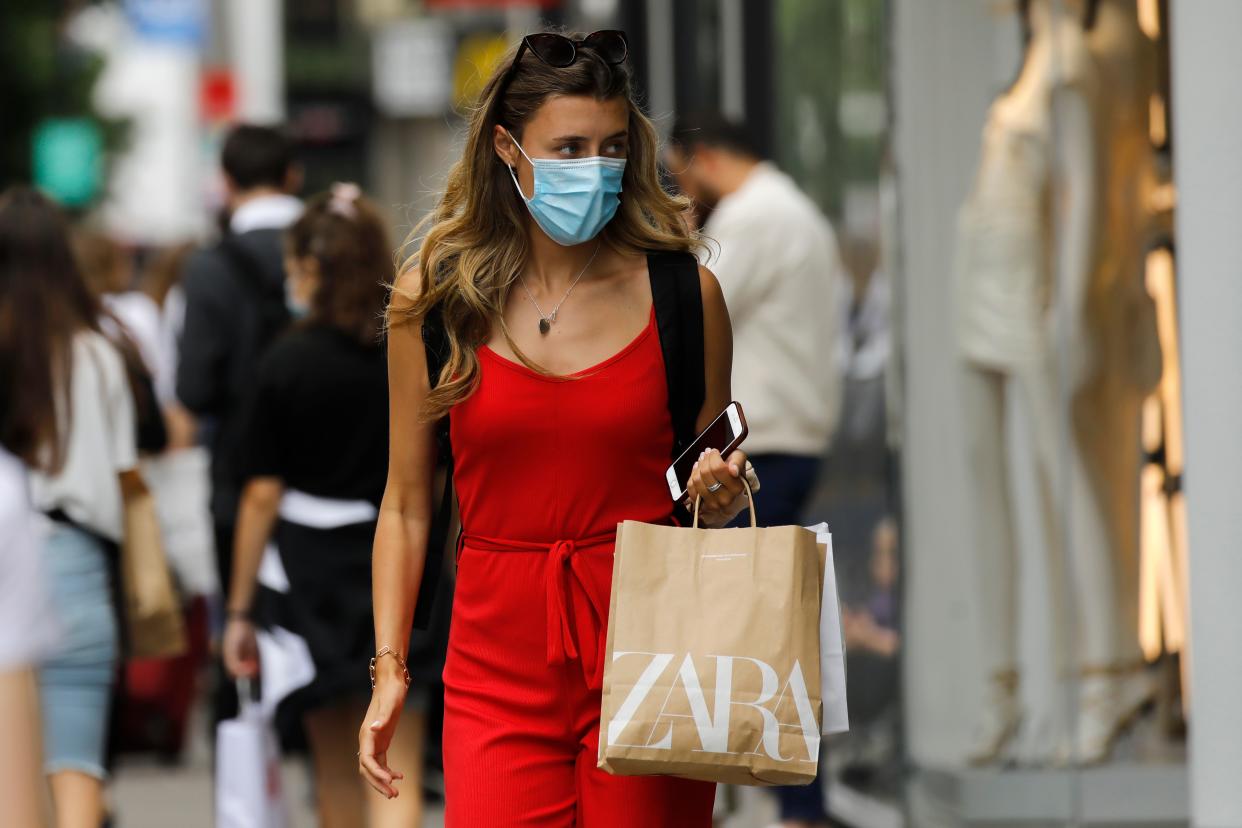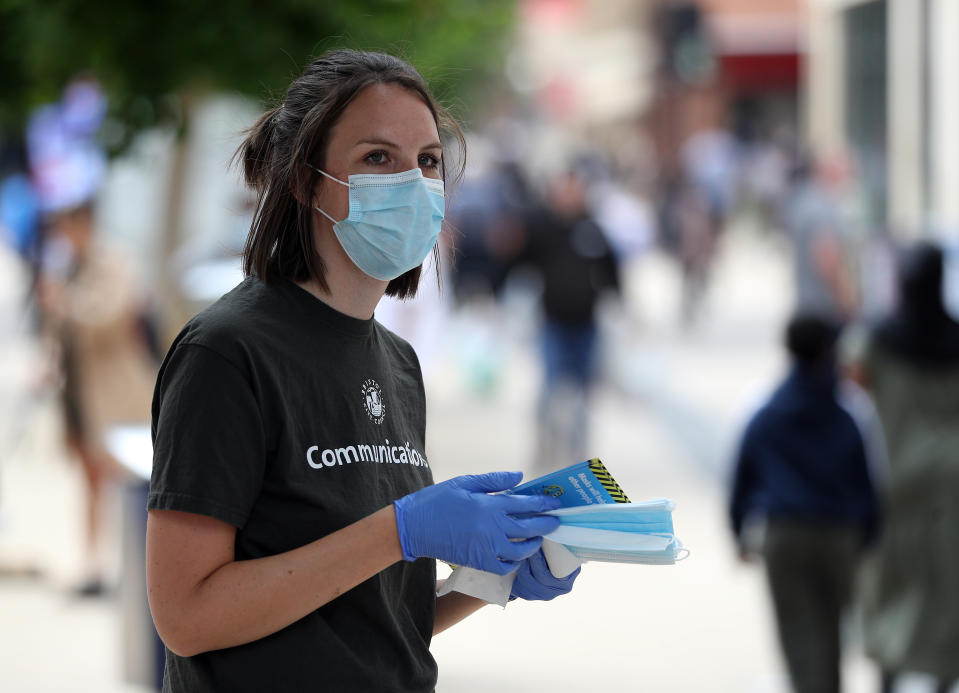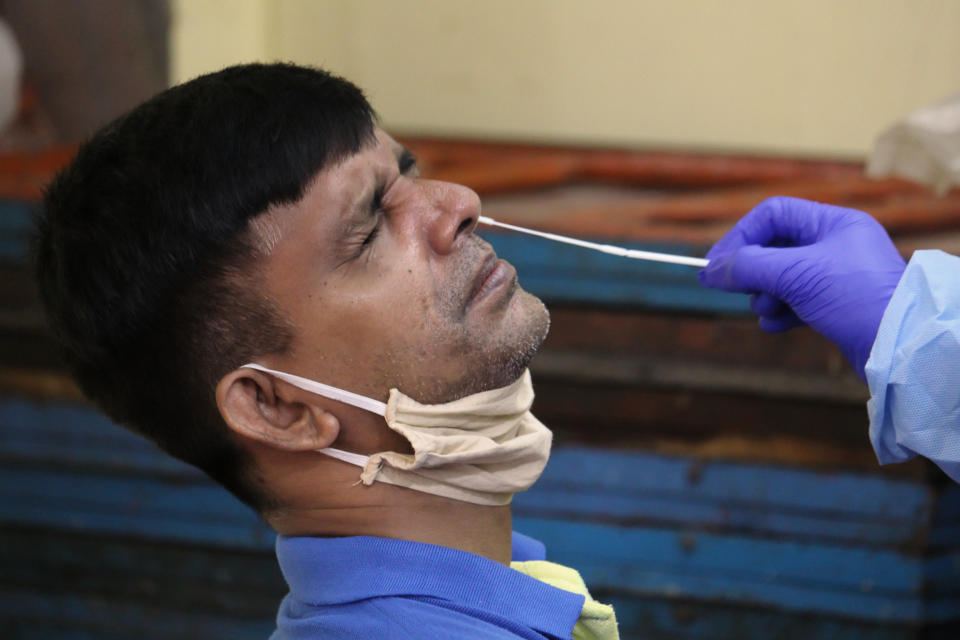Coronavirus: What is a cytokine storm and how is it treated?

Since the coronavirus outbreak was identified at the end of 2019, the global death toll has exceeded 634,000.
Although the infection is said to be mild in four out of five cases, it can trigger a respiratory disease called COVID-19.
This can occur if the virus spreads to the air sacs in the lungs, causing them to become inflamed and fill with fluid or pus.
The lungs then struggle to draw in air, resulting in oxygen levels in the blood falling and carbon dioxide accumulating.
Although generally considered an infection of the airways, the role of the immune system in patient complications is increasingly coming to light, with some enduring a cytokine storm.

Read more: How to stay coronavirus-free as gyms reopen
What is a cytokine storm?
Cytokines are proteins released by the immune system to help fight an infection.
Although generally a positive step towards recovery, some patients overproduce cytokines, leading to a “storm”.
This is theoretically possible with any infection, but is often associated with the 1918 Spanish flu pandemic, which killed at least 50 million people worldwide.
A bizarre phenomenon meant a disproportionately high number of fatalities were young and otherwise healthy.
Read more: Cosmetic surgery booms 'after self-conscious workers stare at themselves on Zoom'
It has been suggested having a fit immune system worked against some of the victims if an influx of cytokines were released.
This has not been the case with the ongoing coronavirus outbreak, where the vast majority of deaths have occurred in the elderly.
Nevertheless, reports of cytokine storms have emerged.

An immune response should be “proportionate to pathogen burden”, scientists from the University of Pennsylvania, Philadelphia, wrote in the journal Immunity.
Mechanisms usually work to prevent the immune system from overreacting.
If it goes into overdrive, however, the proteins that are meant to be fighting an infection mistakenly attack healthy tissue.
This can result in other immune cells and haemoglobin – which transports oxygen around the body – being destroyed.
Read more: Doctor urges people not to wear gloves to ward off coronavirus
Damaged blood vessel walls can cause blood pressure to plummet, leading to shock and organ failure, namely of the lungs.
Scientists from the Huazhong University of Science and Technology in Wuhan, where the coronavirus emerged, found more severe patients had higher levels of two cytokines called IL-2R and IL-6 in their blood – a result that was replicated in later studies.
Dr Roberto Caricchio from Temple University, Philadelphia, told BBC Future: “I’ve seen plenty of it.”
He estimates between 20% and 30%, a “sizeable fraction”, of the severe coronavirus patients he has treated showed signs of a cytokine storm.

Why cytokine storms occur
Although it’s unclear exactly why cytokine storms occur, they have been linked to mutations of the PRF1 gene, which makes a protein called perforin.
Perforin “pokes holes” in infected cells to destroy them, a process that is exacerbated by genetic changes.
“They just keep banging their heads against this, secreting all these cytokines and you get a cytokine storm,” said Dr Grant Schulert from Cincinnati Children’s Hospital Center.
Individual cytokines do not stick around for long, which can “restrict communication” to other cells, triggering an excessive immune response or inflammation.
This, combined with the fact cytokines can affect the whole body, may result in “collateral damage”, wrote the Pennsylvania scientists.
Regulatory pathways must balance infection control with “tolerance of collateral damage” in order to overcome a virus.
“These protective mechanisms have their limits and excessive or sustained production of cytokines can override these regulatory mechanisms,” they added.
How are cytokine storms treated?
Cytokine storms have no specific diagnostic test. Scientists instead look for warning signs of rising protein levels in the blood, like ferritin.
Headaches, weight loss, fatigue and fever are also common symptoms, however, the latter two often occur even with mild coronavirus cases.
“The biggest trick in cytokine storm is just recognising it,” said Dr Schulert.
Elevated cytokines in coronavirus patients should “not be a surprise, but whether these cross the threshold from protective to pathological is unclear”, wrote the Pennsylvania scientists.
Pre-existing conditions like diabetes or heart disease may “decrease resilience and lower the ability to tolerate systemic cytokines”.
Steroids are generally prescribed to dampen the immune response, however, this must remain strong enough to fight off the infection.
Other drugs can target specific cytokines, calming the storm. A small study found a cytokine IL-1 blocking drug called anakinra improved coronavirus patient outcomes.
The Pennsylvania team want to see patients’ levels measured as standard so doctors can “identify patients who develop a bona fide cytokine storm.”

 Yahoo Lifestyle
Yahoo Lifestyle 

